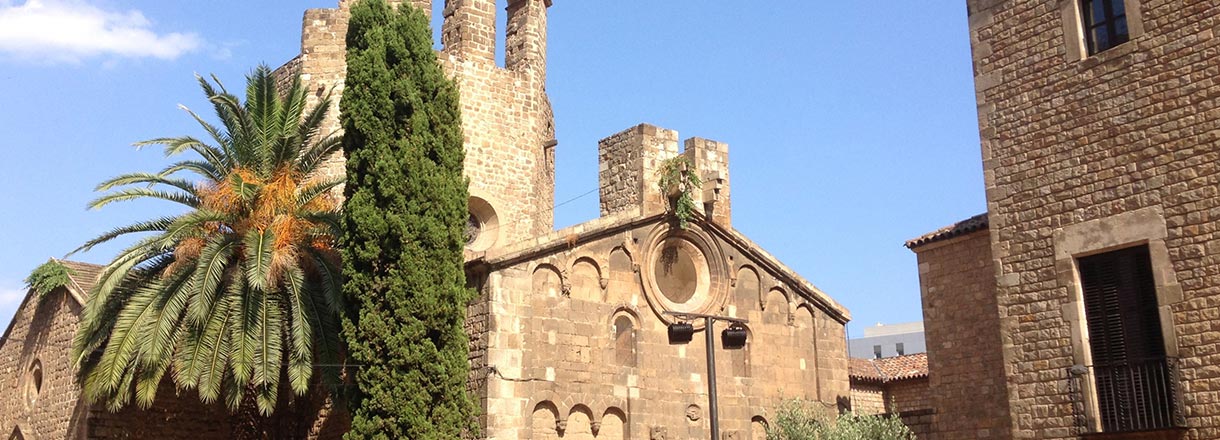
Facts
Basic data: Spain is the third biggest country in the EU, covering an area of more than 504.645 sq km. Barcelona is the capital of Catalonia and second biggest town after Madrid.
Population: Spain 47 million, Barcelona 1,6 million.
Local time: Spain GMT +1 hour.
Electricity: The electrical current in Spain is 220 volts AC, 50Hz. Most sockets are the standard European size with double round-pin plugs. It makes sense to bring an adapter just in case.
Climate in Barcelona: Barcelona has a Mediterranean climate with mild, humid winters and warm, dry summers. However, winters have less precipitation than many other places with this climatic regime.
Its average annual temperature is 20 °C (68 °F) during the day and 11 °C (52 °F) at night. The average annual temperature of the sea is about 18 °C (64 °F). In the coldest month – January, the temperature typically ranges from 7 to 17 °C (45 to 63 °F) during the day, 2 to 10 °C (36 to 50 °F) at night and the average sea temperature is 13 °C (55 °F). In the warmest month – August, the typical temperature ranges from 25 to 31 °C (77 to 88 °F) during the day, about 20 °C (68 °F) at night and the average sea temperature is 25 °C (77 °F). Generally – the summer / "holiday" season lasts about six months, from May to October. Two months – April and November – are transitional; sometimes the temperature exceeds 20 °C (68 °F), with an average temperature of 17–18 °C (63–64 °F) during the day and 8–9 °C (46–48 °F) at night. December, January and February are the coldest months, with average temperatures around 14 °C (57 °F) during the day and 5 °C (41 °F) at night. Large fluctuations in temperature are rare, particularly in the summer months.
Please also remember your sun screen if you have sensitive skin, as you may well need it for protection against the blazing sun (we are serious!).
The currency in Spain is the Euro.
Exchanging money in Spain is easy and follows a similar pattern to elsewhere in southern Europe: ATMs, Banks, and Bureaux de change are your safest bets. Using street vendors is ill-advised and illegal. Banks and bureaux de change may have limited hours and be closed on Sundays and many Spanish banks, especially in smaller cities and towns, will only exchange money for their own clients. For these reasons, using a debit card at an ATM is generally the simplest way to get cash in Spain.
Health and safety: We recommend that all visitors take the same precautions against crime in Spain as they would in any major city. Violent crime against travelers is rarer. Like in every big city, pickpockets are a big problem and Barcelona is unfortunately no exception. Pickpockets often work in professional groups and use tricks to disorient, distract and confuse their victims. Pickpocket places are busy downtown streets. It can happen in the street andin subway in the museum. Watch your belongings at internet cafes or any other place where you set your things down.
Gypsy Gangs: We don’t want to discriminate, but groups of Romany women and their children can be intimidating. If you see them moving en masse, avoid them by crossing the street.

History
History of Barcelona
The founding of Barcelona is the subject of two different legends. The first attributes the founding of the city to the mythological Hercules. The second legend attributes the foundation of the city directly to the historical Carthaginian Hamilcar Barca, father of Hannibal, who named the city Barcino after his family in the 3rd century BC.
In about 15 BC, the Romans redrew the town as a castrum (Roman military camp) centred on the "Mons Taber", a little hill near the contemporary city hall (Plaça de Sant Jaume) Under the Romans, it was a colony with the surname of Faventia, or, in full, Colonia Faventia Julia Augusta Pia Barcino or Colonia Julia Augusta Faventia Paterna Barcino. Pomponius Mela mentions it among the small towns of the district, probably as it was eclipsed by its neighbour Tarraco (modern Tarragona), but it may be gathered from later writers that it gradually grew in wealth and consequence, favoured as it was with a beautiful situation and an excellent harbour. It enjoyed immunity from imperial burdens. The city minted its own coins; some from the era of Galba survive.

Basilica of La Mercè (Mare de Déu de la Mercè)
Important Roman vestiges are displayed in Plaça del Rei underground, as a part of the Barcelona City History Museum MUHBA; the typically Roman grid plan is still visible today in the layout of the historical centre, the Barri Gotic (Gothic Quarter). Some remaining fragments of the Roman walls have been incorporated into the cathedral. The cathedral, also known as the Basilica La Seu, is said to have been founded in 343. The city was conquered by the Visigoths in the early 5th century, becoming for a few years the capital of all Hispania . After being conquered by the Arabs in the early 8th century, it was conquered in 801 by Charlemagne‘s son Louis, who made Barcelona the seat of the Carolingian "Hispanic March" (Marca Hispanica), a buffer zone ruled by the Count of Barcelona.
The Counts of Barcelona became increasingly independent and expanded their territory to include all of Catalonia. In 1137, Aragon and the County of Barcelona merged in dynastic union by the marriage of Ramon Berenguer IV and Petronilla of Aragon, their titles finally borne by only one person when their son Alfonso II of Aragon ascended to the throne in 1162. His territories were later to be known as the Crown of Aragon, which conquered many overseas possessions and ruled the western Mediterranean Sea with outlying territories in Naples and Sicily and as far as Athens in the 13th century. The forging of a dynastic link between the Crowns of Aragon and Castile marked the beginning of Barcelona's decline. The Bank of Barcelona, probably the oldest public bank in Europe, was established by the city magistrates in 1401. It originated from necessities of the state, as did the Bank of Venice (1402) and the Bank of genova (1407).
Barcelona in 1563
The marriage of Ferdinand II of Aragon and Isabella I of Castile in 1469 united the two royal lines. Madrid became the centre of political power whilst the colonisation of the Americas reduced the financial importance (at least in relative terms) of Mediterranean trade. Barcelona was a center of Catalan separatism, including the Catalan Revolt (1640–52) against Philip IV of Spain. The great plague of 1650–1654 halved the city's population.

The fortress at Montjuïc, most southerly point from which measurements were made when calculating the meridional definition of the metre.
In the 18th century, a fortress was built at Montjuic that overlooked the harbour. In 1794, this fortress was used by the French astronomer Pierre François André Méchain for observations relating to a survey stretching to Dunkirk that provided the official basis of the measurement of a metre.The definitive metre bar, manufactured from platinum, was presented to the French legislative assembly on 22 June 1799. Much of Barcelona was negatively effected by the Napoleonic wars, but the start of industrialization saw the fortunes of the province improve.
During the Spanish Civil War, the city, and Catalonia in general, were resolutely Republican. Many enterprises and public services were "collectivised" by the CNT and UGT unions. As the power of the Republican government and the Generalitat diminished, much of the city was under the effective control of anarchist groups. The anarchists lost control of the city to their own allies, the Communists and official government troops, after the street fighting of the Barcelona May Days. The fall of the city on 26 January 1939 caused a mass exodus of civilians who fled to the French border. The resistance of Barcelona to Franco‘s coup d‘etat was to have lasting effects after the defeat of the Republican government. The autonomous institutions of Catalonia were abolished, and the use of the Catalan language in public life was suppressed. Barcelona remained the second largest city in Spain, at the heart of a region which was relatively industrialised and prosperous, despite the devastation of the civil war. The result was a large-scale immigration from poorer regions of Spain (particularly Andalusia, Murcia and Galicia), which in turn led to rapid urbanisation. The city gained vitality in 1992 when it hosted the Olympic games.
History of Mallorca
Coming soon!















